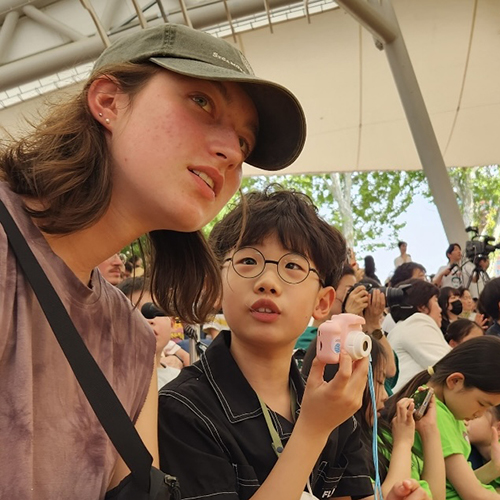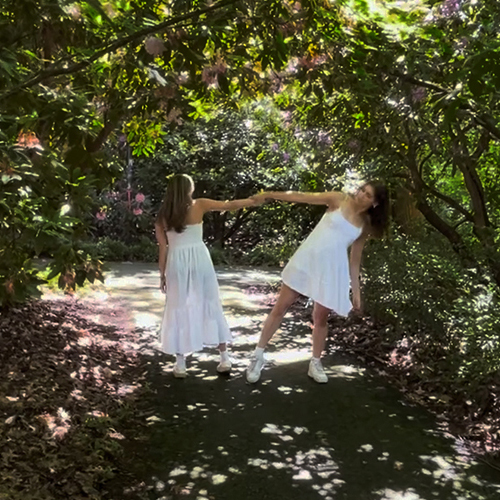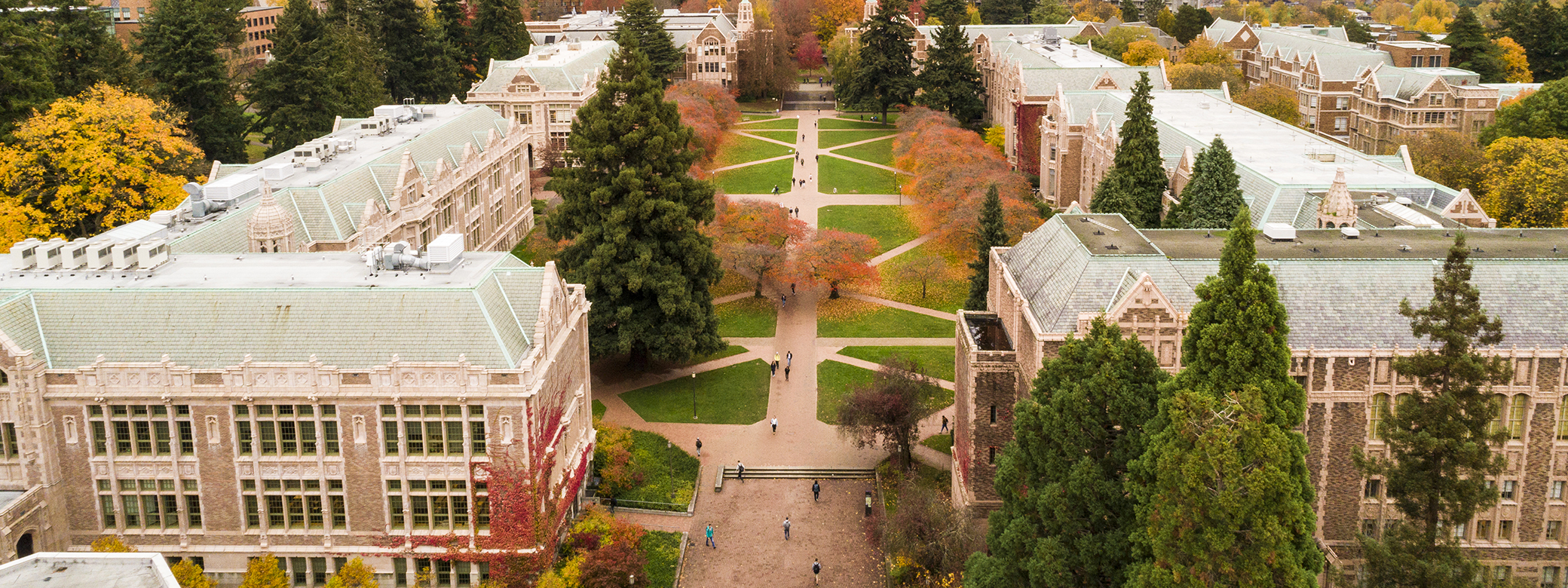
Don’t ask Elizabeth Xiong to play favorites. Xiong graduated from the University of Washington in March with degrees from two colleges — a BA in art history from the College of Arts & Sciences and a BS in computer science from the Paul G. Allen School of Computer Science and Engineering. She is grateful for both.
Xiong arrived at the University as a computer science (CS) major through direct admission to the program. Her art history major was more of a surprise. She took her first art history course — Survey of American Art — to fulfill a UW writing requirement and discovered she loved it. “From my very first art history class, I came out of every lecture learning something new,” Xiong says. By the end of her first year, she had declared art history as her second major.
“Art history encourages you to think about the world totally differently,” Xiong says. “There is often no single right answer. Especially in upper division art history seminars, in the research papers you’re writing, you have the opportunity to say something new. Professors help guide you, but they don’t have all the answers for you. It makes it challenging in a really meaningful and fun way.”
Computer science presented different challenges. Xiong came to the UW with no programming experience, so the learning curve in CS was steep. She struggled with imposter syndrome at first, knowing that other students had been coding for years, but with time she gained confidence. By her sophomore year, she served as a teaching assistant for an introductory CS course.
Transferring Skills Across Fields
Despite the very different worlds of her two majors, Xiong has appreciated their complementary perspectives. Computer science classes, she says, are structured to provide the steps for addressing specific problems. Logical thinking is emphasized. Students are often asked to prove why their chosen solution is best.
“That helped me with art history scholarship — writing papers and coming up with arguments — because CS primed me to think in that logical way,” she says. “And being a teaching assistant in CS was super helpful in developing my ability to communicate clearly.”
“Art history encourages you to think about the world totally differently. There is often no single right answer. ...It makes it challenging in a really meaningful and fun way.”
At the same time, art history strengthened Xiong’s creativity and problem-solving skills. “Thinking outside the box, coming up with alternative ways to solve certain problems — art history helped a lot with that,” she says. “I found those skills really important when I took more theoretical classes in computer science.”
Through art history, Xiong also developed a more nuanced sensitivity to ethical considerations that come up in any field. Many of her art history professors emphasized being mindful of the potential impact of one’s research and writing, particularly in a field that delves deeply into history, culture, and identity. That awareness also influenced Xiong’s work in computer science.
“With art history, you’re always thinking about things in larger contexts,” she says. “In computer science, it’s easy to be in a little bubble about the project you’re working on. Being able to place that in a wider context and consider how you’re impacting the world and how you might use computing for social good — those questions have popped up a lot more for me because of my two majors.”
A Deep Dive During Internships
By junior year, Xiong was debating whether to pursue a career in computing or art history. She sought internships in both areas to explore her options. In spring 2023, Xiong interned at the Seattle Art Museum (SAM) through the museum’s Emerging Arts Leader program. She had always loved SAM — the first thing she did after arriving in Seattle was visit the museum — and she was eager to see what a curator’s work entailed.
During her internship, Xiong worked with Theresa Papanikolas, SAM’s Ann M. Barwick Curator of American Art. Xiong’s main role was to research artist Jaune Quick-to-See Smith (Confederated Salish, Kootenai) — specifically the artist’s presence in Seattle — for an exhibition of Smith’s work (on display at SAM through May 12, 2024). Papanikolas provided a description of the project in broad strokes but made it clear that Xiong would be treated as a colleague, not a student.

“I remember going in on the first day and asking, ‘What’s your vision for this? Where should I get started?’” Xiong says, recalling her first meeting with Papanikolas. “She responded, ‘Oh, that’s what you’ll be helping us with!’” Xiong laughs at the memory. “It was really exciting to develop something from the ground up, with a lot of freedom to think about different ways to approach the research and curatorial process.” (Xiong wrote an essay about the internship on SAM’s blog.)
Two weeks after completing the museum internship, Xiong packed up and headed to San Francisco for a summer internship at Splunk, a software company. As a software engineer intern on the Enterprise User Interaction team, she was tasked with migrating a webpage to a new framework using new computer languages. She had to resolve accessibility issues and consider the logic behind all interactions a user would have on the redesigned page.
Xiong says the two internships “formed a very core part” of her undergraduate education. And they clarified her career path — for now. This summer, Xiong will join Splunk as a full-time software engineer.
But that doesn’t mean she’s ready to give up art history.
“I’m still seriously considering pursuing graduate school in art history at some point,” Xiong says. “For now, I plan to stay up to date with scholarship in the field and volunteer at a museum in San Francisco. We’ll see. But I’m definitely not leaving art history behind.”
In a University of Washington Magazine article, "Seeing myself in a 125-year-old photograph," Elizabeth Xiong writes about the personal significance of researching a photo for a UW art history course.
More Stories

A Statistician Weighs in on AI
Statistics professor Zaid Harchaoui, working at the intersection of statistics and computing, explores what AI models do well, where they fall short, and why.

Finding Family in Korea Through Language & Plants
Through her love of languages and plants — and some serendipity — UW junior Katie Ruesink connected with a Korean family while studying in Seoul.

Dancing Across Campus
For the dance course "Activating Space," students danced in public spaces across the University of Washington's Seattle campus this spring.
